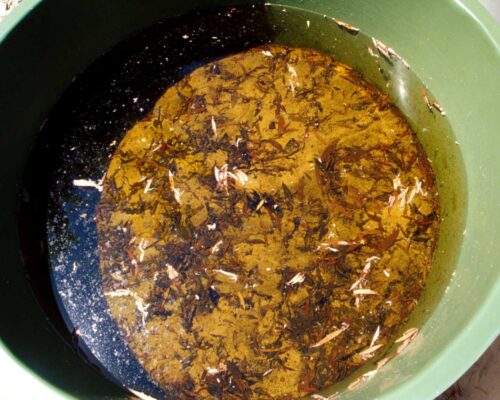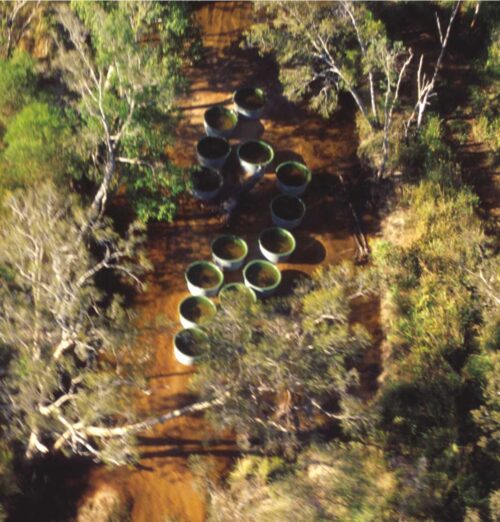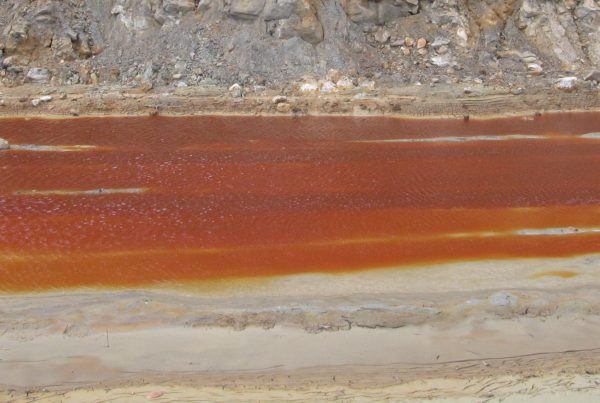Mesocosm studies were used for studying whole aquatic biotic communities for site-specific magnesium guideline values as per ANZG (2018) Water Quality Guidelines.
Magnesium (Mg) is a mining‐related contaminant in the Alligators Rivers Region of tropical northern Australia. A mesocosm experiment was used to assess Mg toxicity to aquatic freshwater assemblages. Twenty‐five 2700 L tubs were arranged stratified‐randomly on the bed of Magela Creek, a seasonally‐flowing, sandy stream channel in the Alligator Rivers Region of northern Australia. The experiment comprised five replicates of four nominal Mg treatments, i.e. 2.5, 7.5, 23 and 68 mg L–1, and a control. Phytoplankton biomass, and diatom, zooplankton and macroinvertebrate assemblages present in the treatment tubs were sampled before and after Mg addition. A significant negative relationship between phytoplankton biomass and magnesium was observed 4 weeks after Mg addition as measured by chlorophyll–a concentrations (r 2 = 0.97, p = 0.01). This result was supported by reductions in some major phytoplankton groups in response to increasing Mg concentrations, in the same experiment and from independent field studies. There was a significant negative relationship between zooplankton assemblage similarity (to control) and Mg concentrations (r 2 = 0.96, p = 0.002). Seven weeks after Mg addition, macroinvertebrate assemblages were dominated by three microcrustacean groups (Ostracoda, Cladocera and Copepoda), each reaching maximum abundance at intermediate Mg concentrations (i.e. unimodal responses). The responses of phytoplankton and zooplankton were used to derive assemblage effect concentrations (i.e. Mg concentrations resulting in x% of the assemblage change (ECx)). Magnesium concentrations resulting in assemblage EC01 values were <3 mg L– 1. Together with candidate guideline values from other laboratory‐ and field‐based lines of evidence, the mesocosm EC01 values have been incorporated into a weight‐of‐evidence framework for a robust regulatory approach to environmental protection.
More information on pit closure studies can be found in our research article entitled “Elevated Magnesium Concentrations Altered Freshwater Assemblage Structures in a Mesocosm Experiment” in an upcoming issue of the Wiley Environmental Toxicology and Chemistry (ETC) journal. Read here.
MLC offers pit lake closure study services for all ecological, water quality planning aspects of operational management and closure.





